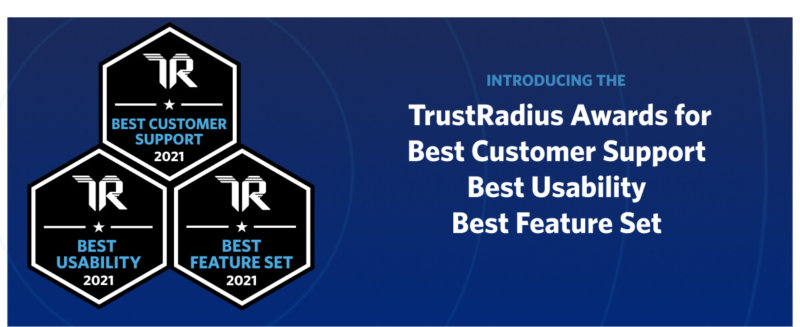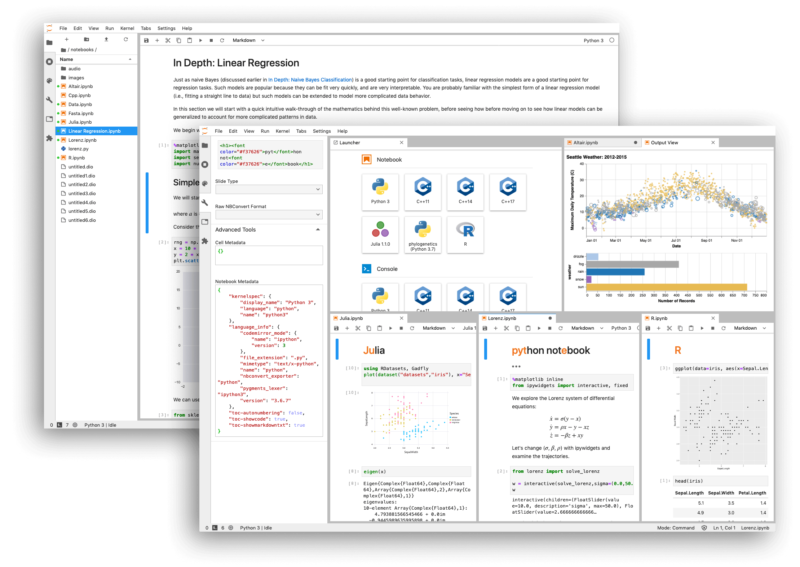B2B Connection
Information and resources for technology buyers
Big data is being collected at such exponential rates that traditional IT approaches are struggling to keep up. This is where artificial intelligence for IT Operations, or AIOps comes into play. AIOPs platforms use machine learning to collect and analyze big data from various sources. This effectively increases the organization’s infrastructure visibility and allows IT teams to automate processes such as alert handling. With AIOPs, IT teams can manage this large influx of data being generated and produce actionable insights for the enterprise as a result. Check out our post below to learn more about how AIOps works and what it can do for you: AIOps for Enterprises AIOPS tools are as varied and specialized as the hoards of information they help you manage. The options below can provide tools to quickly address problems and potentially spot them before they start. It is essential to find the software best-suited to your specific needs. The options covered here are: Cost Use Case Top Features TR Score ScienceLogic SL1 Starts at $7.50 per month per node Enterprise Hybrid Cloud MonitoringBusiness Service VisibilityWorkflow Automation 8.6/10 LogicMonitor Quotes available through vendor Companies of all sizes Data ForecastingRoot Cause AnalysisDynamic Thresholds 8.6/10 PagerDuty Starts at […]
The bigger you are the harder you fall–unless you have a powerful management structure for your team of course. If you want to ensure that your team can manage their complex projects and operations, ERP software may be the solution. ERP systems can offer companies robust tools to manage long and tasking workloads like accounting, scheduling, projects, and development. It can both be your company’s safety net when work gets frustrating as well as a system to streamline daily workflow. What is ERP Software? Enterprise resource planning (ERP) software is like a virtual task master for any complex business needs. With an ERP you can maximize daily business processes like optimizing workflow with project management tools or expediting the procurement process. The types of business functions an ERP system can help with are surprisingly diverse from things like Human Resources to business intelligence (BI). The software solution’s versatile nature allows it to fall into several categories of business software, all in one software or software package. An ERP goal is to make your team’s workload easier to manage with a robust set of tools. Popular ERP Features and Functionality Finance, Accounting, expense management, and other related tools Project management (some […]
Effective customer engagement is essential for any business. Large enterprises have more resources than smaller companies but need to engage their audience on a larger scale. Strong, positive engagement strategies can keep existing customers happy and help you attract new ones. We’ll explore the features and strategies your enterprise should consider for customer engagement. We’ll also review some of the most popular customer engagement tools for enterprises. The tools we cover are: Adobe Experience Manager Braze Iterable Salesforce Salesforce Experience Cloud Salesforce Service Cloud SAP Service Cloud To learn more about the importance of customer engagement for your enterprise, check out our definitional piece: Customer Engagement Features for Enterprises In our post on Customer Engagement Software for Small Businesses, we went over the main benefits you can expect from these platforms. For a small business, features like apps, loyalty programs, contact centers, or live chat may be the icing on the cake. If you’re an enterprise, these capabilities become indispensable for engaging customers. Customer Engagement Platforms are essential when it comes to building a customer engagement strategy. Promoting Customer Loyalty Enterprises need to always look for new ways to keep their most loyal customers satisfied and maximize customer retention. In […]
Social media is indispensable for enterprises looking to maintain a strong competitive advantage. According to recent research by Sprout Social, as many as 98% of consumers plan to buy on social media in 2022. The same report concluded that eCommerce on social media has a market potential surpassing $1 trillion. Social Media Analytics provides enterprises with actionable insights, metrics, and KPIs. They help businesses track how consumers engage with their social media channels. This knowledge is crucial to formulate your marketing strategy while enabling social media marketing. For more on Social Media Analytics, check out our blog post from June 2022: The Importance of Social Media Analytics for Enterprises In today’s online market, social media analytics are as important for enterprises as they are for small businesses. Enterprise employees are under constant pressure to deliver. Not only do you need to strive for positive business outcomes, these outcomes often need to surpass expectations. To maintain and increase market share in the age of social media, you need sophisticated analytics tools that provide in-depth insights on performance and user engagement with your brand. Social media analytics can give your business a 360-degree view of how users are engaging with your brands […]
It might sound far-fetched, but there is a way for teams to create their own project and business management software. No more scouring multiple markets for the perfect panacea and being disappointed with solutions that barely meet your needs. Instead, you can build the applications you need with your team in mind. Low-code tools can help real developers or tech-literate create apps customized for your team and company. What Is Low-Code In Simple Terms? Low code basically means less coding or fewer operations than writing all the code yourself (also called hand-coding). Instead of hand-coding, you are given a special user interface (UI) that has the functionality to build applications. The UI for low code applications is usually a graphical user interface framework. This is essentially the drag-and-drop interface with clearly labeled buttons that you are most likely used to. One example of a low-code environment is online blogging sites. Some offer front-end languages for coding titles, bold-faced words, and italicized sentences. Those same platforms will have a simple interface where you can just click a button for bold letters. You can copy and paste an image into the text rather than having to code the link. This is a […]
Web analytics software empowers enterprises the data and analysis to meet the needs of their diverse consumers. By using the software for data collection and analysis, teams can find figure out the motivations behind user behavior. Organization can modernize their virtual platforms to achieve a better user experience. We go into some of the best web analytics software that are fantastically suited to major companies. What is Web Analytics? Website owners can use web analytics software for data collection and to map out and observe visitor behavior. Teams can perform analysis, make reports, and brainstorm with the data pulled form real-time customer behavior. The website data is often used for meeting business goals as well as even updating a site’s search engine optimization (SEO). When you update your SEO you can help you increase your rankings with search engines and then become visible to your target audience. When you upgrade your SEO, it can also help with your visibility and following on social media. By maximizing your virtual brand, you can pull in even more web traffic data. Web analytics data is incredibly valuable for website performance. The key metrics or key performance indicators (KPIs) can be sued to statistically […]
Corporate learning management systems allow companies to effectively train new hires, maintain compliance, and provide professional development opportunities. Given that SaaS products at the enterprise level come with an extremely hefty price tag, selecting the right one is vital. Enterprise companies need to ensure that the corporate LMS they select is equipped to handle their needs across departments and at scale from day one. We’ll break down the most important LMS features for enterprises, as well as evaluate some of the most popular LMS products. For more details about the features and benefits of a corporate learning management system, check out our previous blog post. What do Enterprises Need From an LMS? Enterprises generally have employees in several geographical locations, each with their own labor laws and compliance standards. These companies also have more complex professional development needs than their smaller counterparts. For example, many enterprises have a large number of entry-level employees. Enterprises can utilize an LMS to offer learning materials and online courses prepare these employees for more senior roles. Standard Training for All Employees A corporate LMS helps enterprises make sure that their new hires come in with the same knowledge baseline. This saves HR from having […]
The amount of data storage required by companies is vast, and only going to continue to grow. Data warehouse storage options are one method of solving this ever-expanding problem. Just as their needs are increasing, the market is evolving rapidly. In order to stay on top of such a fast-paced market that touches dozens of industries, up-to-date info is essential. That’s why we have compiled a list of the hottest data warehouse statistics for 2022 and beyond. We cover categories such as: Data Warehouse Market Scope and Scale Data Warehouse on The Cloud Data Warehouse Buying and Implementation Data Growth and Need Database Warehouse Concerns Finally, we will explore three of the most important trends in the data warehouse sphere. Top 24 Data Warehouse Statistics Data Warehouse Market Scope and Scale The global data warehousing market size was valued at $21.18 billion in 2019. (Allied Market Research 2021) The global data warehousing market is projected to reach $51.18 billion by 2028. (Allied Market Research 2021) Data warehouse has the highest adoption of data solutions, used by 54% of organizations. (Flexera 2021) Data warehouse options are by far the most popular platform-as-a-service data solution for beginners, with 47% of organizations at […]
Ukraine is a nation of strong and resilient people. We wish all Ukrainians safety and strength during this extremely difficult time. We stand with them and their country.
Since more people are working from home now than ever before, online communication tools have become the most popular software on the TrustRadius platform. In just the first few months of 2020, we’ve seen a 445% increase in impressions across the entire web conferencing category: Skype was one of the first online video calling and chat apps on the market. For many professionals, this was their first introduction to the online communication world. Yet Skype is not the top web conferencing tool in the global market right now—Zoom holds that position, with Skype as a commonly-compared alternative. In fact, the Skype vs Zoom comparison page ranked #4 on the TrustRadius top list of growing product comparisons post-COVID: While competition continues to ramp up in the saturated video conferencing market, Skype is still a valid choice for veteran users and organizations who want to be able to make calls to landlines and host online meetings all in one tool. Still, many users prefer to seek alternatives. Below we’ll explore Skype’s interesting history as a preferred web conferencing tool and highlight five Skype alternatives to consider when choosing your ultimate video conferencing software. An Overview of Skype Online Meeting Software Skype currently […]
Tableau is one of the most popular business intelligence solutions on the market, and for good reason. Users can leverage Tableau to create robust and interactive visualizations based on an analysis of big data sources. Tableau visualizations are available on all screen sizes and most devices, making it a powerful and versatile data visualization tool. For some, you may have heard of its capabilities, but are still confused about what exactly the software does. At its heart, business intelligence solutions offer ways to gain insights from vast amounts of data, often in real-time. Though the types of software vary in capabilities, all are based around data analytics and creating actionable insights. Despite these strengths, Tableau can be too pricey for a lot of businesses and requires savvy users to create visualizations that require complex querying. Tableau also lags behind some business intelligence trends when performing tasks besides visualizations, such as large-scale reporting. For these reasons, Tableau isn’t right for every business. Fortunately, there are many business intelligence software alternatives. The alternatives listed below are top-rated business intelligence tools on TrustRadius that are frequently compared to Tableau. Qlik Sense “Qlik Sense offers an end-to-end solution that scales well. I would advise […]
Enterprises are drowning in data. The sheer volume of data about customers, suppliers, products, and business partners has never been so extensive and yet so crucially important. Data mining is more effective at gathering information at scale, and data warehouses are better at storage. Modern BI tools matter precisely because they promise to make sense of the tsunami of data and uncover the insights within that are vital to winning in the marketplace. The development of BI technology has largely been focused on fulfilling that elusive goal. This article explains the major shifts in approaches to business intelligence and outlines the advantages of the most recent evolution of this technology based on automation through machine learning and AI. As BI vendors move towards this new approach, buyers need to understand this shift as they evaluate products. For more visual learners, check out this video on the history of BI. The First Generation of BI: IT as Central Guardian The first generation of business intelligence software was largely managed by the IT department as the central guardian of all enterprise data. The Extract, Transform, Load (ETL) paradigm combined data from multiple systems to a single database, data store, or warehouse for […]
People switch jobs for different reasons. Some of them are looking for better work opportunities, better salaries, shorter commute or even career change. But, how shocking it is to know that 50% of employees who leave their jobs is because of bad managers? Indeed, a big part of employees’ routine is related to their relationship with their bosses, which means that managers have a huge impact on people’s work health and work atmosphere in general. On top of everything mentioned, the position of a maintenance manager also requires a fair bit of technical knowledge which makes it a challenging position. With continuous advancements in technology and with the human factor getting more relevance in organizations, there are specific characteristics company leaders expect to find in their maintenance managers. In today’s post, we will cover 6 skills that maintenance managers are expected to have to become a successful team player within the organization. 1. Technical knowledge Maintenance management requires a deep understanding of how machines and systems work, and how to keep them running with limited resources at the lowest possible cost. Technical knowledge plays an important role in problem-solving and process improvement. The number of solutions for any particular problem […]
E-Signature tools allow companies to make the contract and negotiations process faster and more accessible. DocuSign has become a common choice for many, yet it is not the only choice. Different electronic signature platforms will be suitable for different use-cases. This piece will explore Docusign, as well as: Adobe eSign Pandadoc HelloSign SignNow The Pros & Cons of DocuSign E-signature software allow users to take advantage of digital signatures. For a quick lesson on why these are so useful check out the video below DocuSign is an E-signature tool with a massive chunk of the market share in its category. According to DocuSign reviews on TrustRadius, some of the product’s benefits include: Reduced cycle time for contracts, particularly when multiple parties are involved Mobile functionality for signing documents on the go Multi-language support Dropbox integration (and other third-party integrations) Easy to use UI Support for multiple document formats and technologies Authentication, auditing, encryption and other security features On the negative side, no software will be the perfect solution for everyone. According to DocuSign users, the platform has a few potential drawbacks as well: The API leaves room for improvement Implementation in a live environment is different than in the sandbox […]
Business Intelligence software (BI) makes up a large heterogeneous category of software, however not all tools in the category can be meaningfully compared to each other. There are several types of BI tools of which the most substantive are Full-Stack Business Intelligence Tools and Data Discovery and Visualization Tools. Full-stack BI solutions are useful for organizations that wish to deliver relatively stable operational reports in a consistent format to front-line staff across the organization. On the other hand, the focus for Data Discovery and Visualization tools is not primarily reporting and monitoring, but rather ad-hoc analysis of multiple data sources. These tools provide data analysts with an intuitive way to sift through large volumes of data to expose patterns and outliers hidden in the data. This year, TrustRadius is awarding the best in customer support and usability among some of the most common categories of Business Intelligence Software (BI) tools in use today. The Best Of Business Intelligence winners are: Best Usability – Business Intelligence ThoughtSpot, 1st Place Best Customer Support – Data Visualization BI Sigma Computing, 1st Place Best Business Intelligence Usability Business Intelligence (BI) tools are designed to solve the specific problem of enterprise data silos. Much crucial […]
Document Management Systems (DMS) provide enterprises with the capability to digitally capture and convert documents and files. Features of document management software may also extend to document storage, search and retrieval, and sharing. DMS reduces enterprise dependence upon space-consuming document printing hardware, printed paper, and file drawers. At TrustRadius, we are recognizing the best of Document Management Systems in the following categories: Best Support, Best Usability, and Best Feature Set. As filing cabinets are becoming a thing of the past, moving documents onto the cloud allows for easy sharing capabilities both internally and externally. However, this does open up opportunities in weak systems for security and privacy threats. It’s important to consider the quality of security as a top feature of your DMS. Also, if upgrading systems, you’ll want easy to use software so your employees can easily get their virtual workspace up and running. And in the rare case when things go awry, having a support team on your side to quickly solve issues is extremely important. For 2021, here are the top awarded Document Management Systems: Contract AnalysisKira Systems, Feature Set, 1st Place Document Management PowerDMS, Customer Support, 1st Place Adobe Acrobat DC, Customer Support, 2nd Place PowerDMS, […]
Jupyter Notebook is a popular tool for writing Python code for data science. For new users that haven’t used notebooks before, though, it can be a little tricky to get started with. In this tutorial, I’ll go over how to install Jupyter Notebook, what it’s best used for, and how to run code with it. I use Jupyter Notebooks all the time for cleaning data, and presenting data visualizations along with easy to read documentation. In this video, I’ll be going through the basics of setting up and using Jupyter Notebooks. I’ve included timestamps in the description if you want to jump to a specific part of the video. If you want to see more software demos and tutorials, hit the subscribe button below to make sure you never miss a video. Table of Contents Why Jupyter Notebooks? Jupyter Installation with Anaconda Creating a Notebook Writing Code Running your code Documentation Why Jupyter Notebooks? Jupyter Notebook is a web based application allowing users to create documents with markup text and code that can be run in document, piece by piece. Jupyter is built for data cleaning, visualization, and presentation. The notebooks support a variety of languages, including R, Ruby and […]
Data Fabric is a new category of technology that helps businesses simplify data management and accelerate the delivery of app-centric technologies. Though data fabric solutions offer a number of unique features and capabilities, they are often confused with data virtualization tools. We spoke with Dan DeMers, the CEO at Data Fabric pioneer Cinchy, to gain more insight into the key capabilities that set Data Fabric technology apart. Data Fabric technology is getting a lot of attention right now, but many people associate it with Data Virtualization or other data management software. How does Data Fabric software differ from other data management technologies? The adoption of Data Fabric technology is growing rapidly but it’s fair to say that it is not yet widely understood. This fact has not been helped by vendors claiming to represent Data Fabric technology in order to capture website traffic when they are fundamentally different in design and function. The key element that defines a Data Fabric is suggested by the word “fabric” itself. The term describes how this technology manages data as a logical network of structured datasets, and does not rely on the on-going exchange of copies between apps or data stores in order to […]
Business intelligence has become more advanced and more available over the last ten years. Every business can benefit from business intelligence, but if you don’t have a business intelligence strategy, you aren’t getting as much out of business intelligence as you could be. This article will go over how to determine your business intelligence capabilities and how to create a strategy to capture business information and generate useful reports. With your business intelligence strategy figured out, you can select the business intelligence tool that fits your needs. How to Build a Business Strategy To build a business strategy, you’ll first have to figure out what data you are capable of collecting and how capable your staff is at performing complex data analysis. There’s no sense in collecting data you can’t analyze, and your skilled analysts will be underutilized if they don’t have a lot of data to use. Determine Key Data and How you Can Collect it When determining what data is essential for your business, a great place to start is with industry KPIs. Look at the benchmarks that other organizations in your industry hit on KPIs like sales, or whatever KPIs are specific to your industry. With this […]
Business intelligence and analytics tools are essential for any business, and data science is critical for data-rich enterprises. Is your organization utilizing these technologies? This post will lay out the benefits of each one and help you decide what the next step is for your business. Business Intelligence Keeps Track of Business Data Business Intelligence has changed a lot over the years, but it focuses on determining the state of your business and how it got there. Using business intelligence tools, you can answer questions like “What was our growth within the last year?” or “What were sales for this product in May?” If you have a business question that starts with “what?”, business intelligence tools are the best way to find the answer. Business intelligence software provides a system that can store, query, and report on data collected from other software used by your business. Top-rated Business Intelligence tools like Tableau and Qlik Sense enable analysts to ascertain the state of an organization and create visualizations to display their findings. Business Analytics Explains Business Data Business analytics focuses on using business data to extrapolate factors that have led the business to its current state. Additionally, business analytics also make […]




















